European towns being swallowed by the sea
These coastal communities are under threat
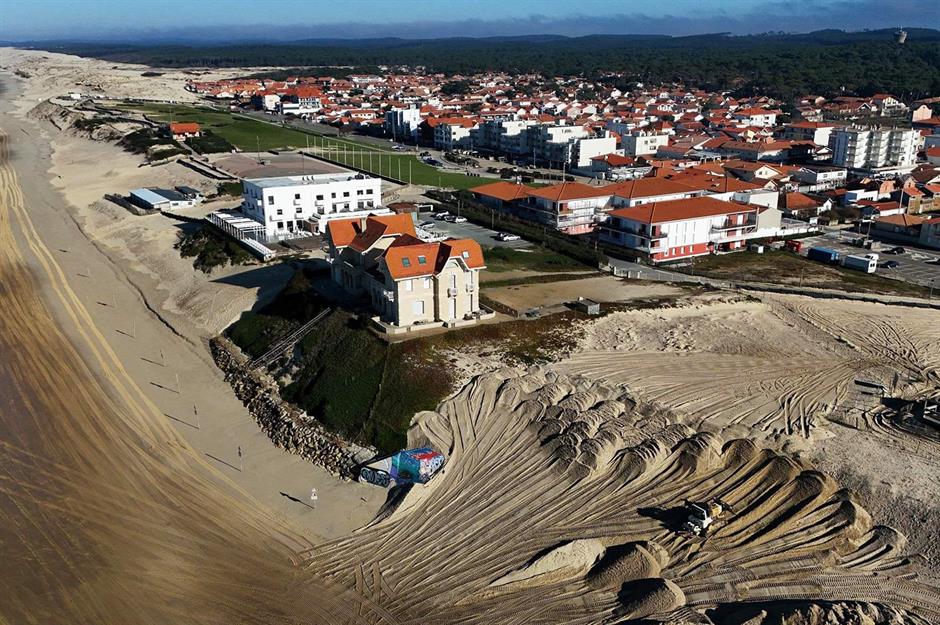
From severe storms to rising sea levels, soaring summer temperatures and catastrophic flooding, climate change is having a devasting impact on our planet. While some parts of the world are relatively safe from the effects of global warming, coastal communities across Europe are vulnerable.
As strong winds and powerful sea waves batter their coastlines, these once envy-inducing towns are being plagued by coastal erosion, leading to disappearing beaches and the loss of homes.
Read on to discover the places being reclaimed by the ocean. To enjoy these images on a desktop computer FULL SCREEN, click on the icon at the top right of the image.
Newquay, Cornwall, UK

The town of Newquay in Cornwall is considered to be one of England's most scenic spots. Popular with holidaymakers, the coastal town boasts turquoise waters, tranquil bays, dramatic cliffs and some of the best surfing waves in Britain. But sadly, the future of the majestic seaside town is uncertain, thanks to the devastating effects of climate change.
In recent years, the coastline of Newquay has suffered a substantial decline, with dozens of landslides, rockfall and slope instability incidents recorded on the British Geological Survey ‘GeoIndex’ database. Tolcarne Point, Tolcarne Beach and Whipsiderry are considered to be most at risk.
Newquay, Cornwall, UK
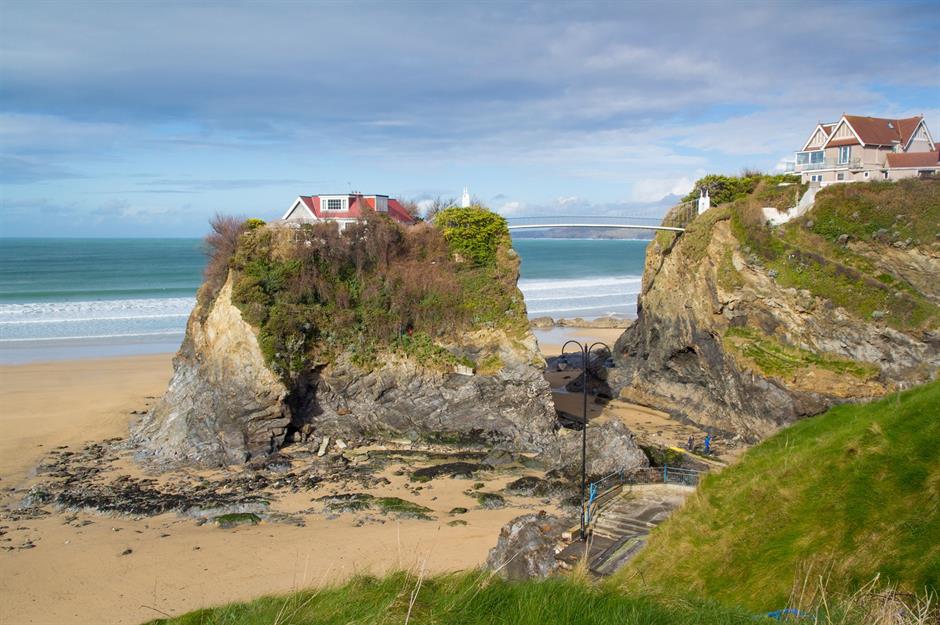
Defra, the Department for Environment Food and Rural Affairs, has warned that the coastal cliffs here are likely to experience at least 131 feet (40m) of erosion in the next century. This could mean that many of the town's homes and businesses will be swept out to sea, potentially putting an end to the area's thriving tourism industry.
According to the BBC, in December 2023, parts of Whipsiderry beach cliff collapsed onto the sand below, causing an "almighty boom". Then, in July 2024, Cornwall Council cordoned off a section of Great Western Beach, following the collapse of part of the cliff.
Newquay, Cornwall, UK
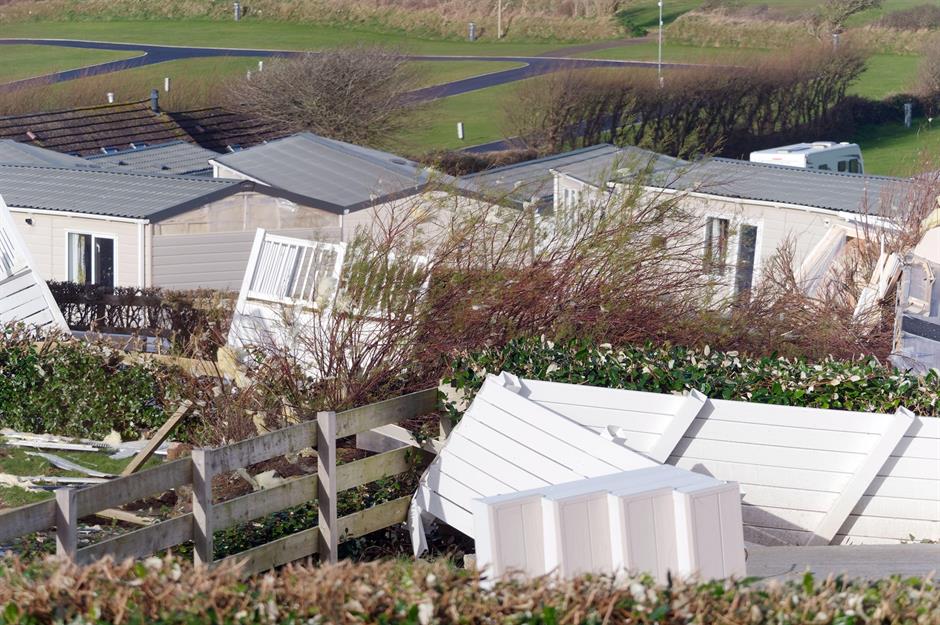
Locals have also raised concerns that a major route into the coastal town could be eroded altogether unless urgent action is taken to stabilise Whipsiderry cliff. It’s thought the B3276 coastal road could be in jeopardy within the next two years, due to the current rate of erosion.
It isn't just erosion that's the problem, either. In January 2025, British newspaper The Daily Mail reported that a 'mini tornado' ripped through Cornwall, leaving a trail of destruction in its wake. High-speed winds and torrential rain battered the county, destroying holiday homes, tearing tiles from roofs and even damaging cars. The freak weather event highlights that coastal towns like Newquay have a very uncertain future.
Rubjerg Knude lighthouse, Hjørring, Denmark
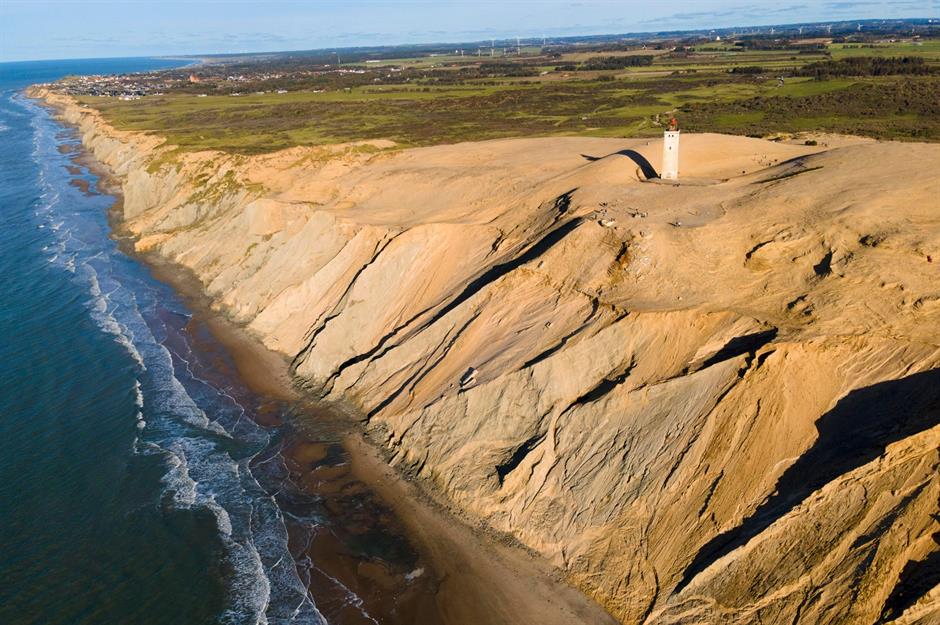
Most than 120 years old, the Rubjerg Knude Lighthouse was built in 1900 to protect the coastline of Jutland in northern Denmark.
However, just 10 years later, drifting sands became such a problem, that trees and bushes had to be planted to try to protect the area from erosion and sand displacement.
Rubjerg Knude lighthouse, Hjørring, Denmark

However, this natural defence system did little to protect the lighthouse and soon, the sand built up into a towering dune that covered the beacon's light. Sadly, this led to the demise of the lighthouse, which was made defunct in August 1968. The structure was briefly turned into a museum but had to be closed when the shifting sands slowly buried the nearby buildings, raising safety concerns.
The lighthouse was once 650 feet (198m) from the edge, but due to the sand displacement and the steady erosion of the coastline, by 2019, it was only about 20 feet away (6.1m). In 2008, a nearby church, which was constructed in 1250, was dismantled to prevent it from falling into the sea.
Rubjerg Knude lighthouse, Hjørring, Denmark

In 2019, extreme measures were taken to protect the century-old lighthouse. Incredibly, it was picked up and moved 230 feet (70m) inland.
The lighthouse, which weighs about 1,000 tons (1 million kg), was carefully lifted onto a track and relocated at an estimated speed of 26 feet (8m) per hour. The project is said to have cost around five million Danish kroner, which is £557,500 ($696k).
Bonifacio, Corsica, France
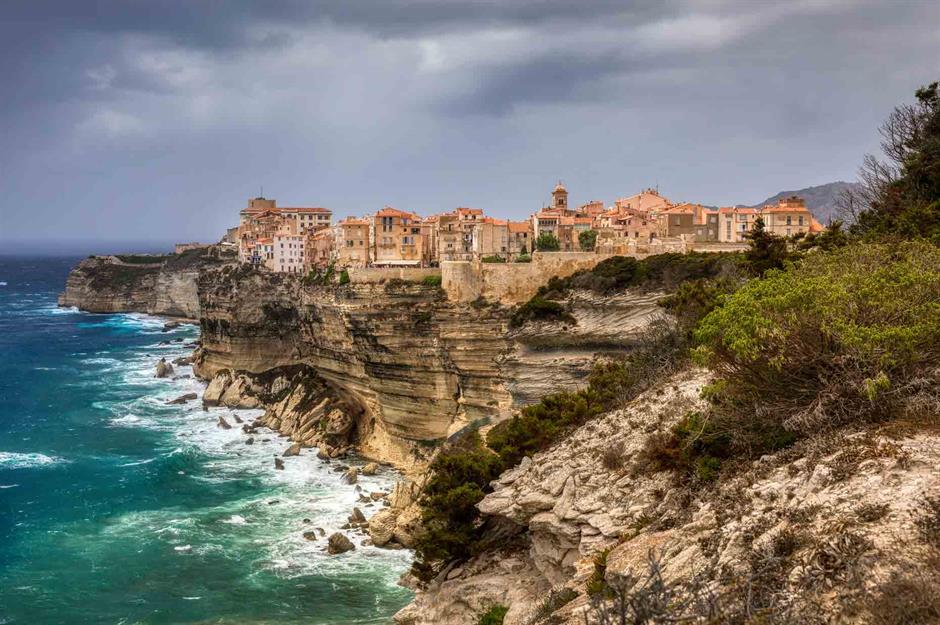
Perched on the southern tip of the French island of Corsica, the enchanting town of Bonifacio sits on top of a majestic cliff, which rises above the enchanting waters of the Mediterranean Sea.
However, due to strong sea currents, high wind speeds and frequent landslides, the future of this idyllic Mediterranean treasure is under threat.
Bonifacio, Corsica, France
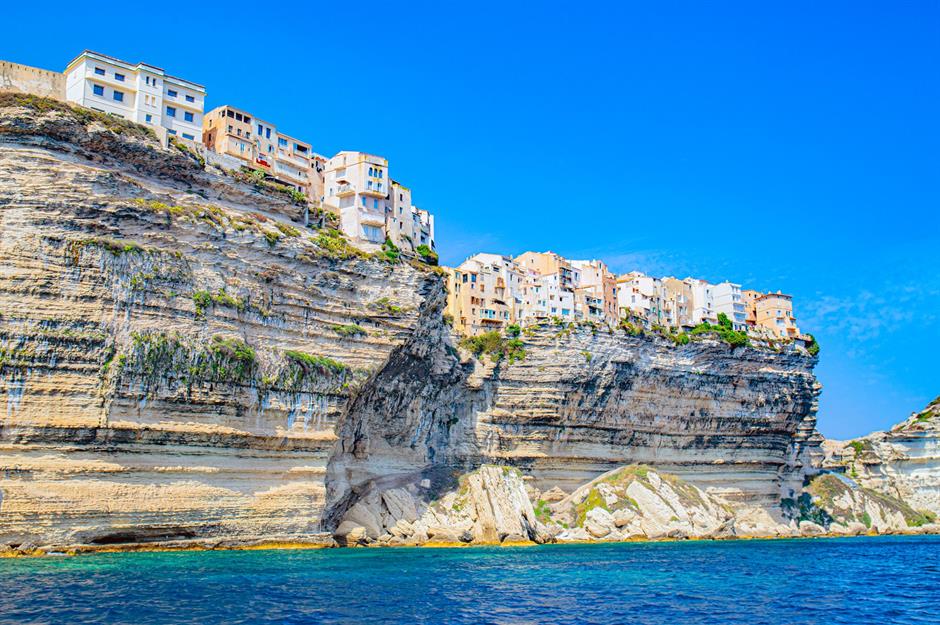
The foot of the sandstone cliff where Bonifacio is located has retreated substantially over the last century, due to severe erosion, leaving a dramatic overhang on which some 30 homes are hanging on for dear life.
A 2018 report on climate change and the marine environment in Corsica concluded that global warming was contributing to the area's erosion issues. It urged the town's authorities to address the perilous situation, sooner rather than later.
While no properties have (yet) tumbled into the waves below, a state of emergency was declared in 2019, when parts of the town's 820-year-old medieval fortress crumbled under the force of powerful winds.
Bonifacio, Corsica, France
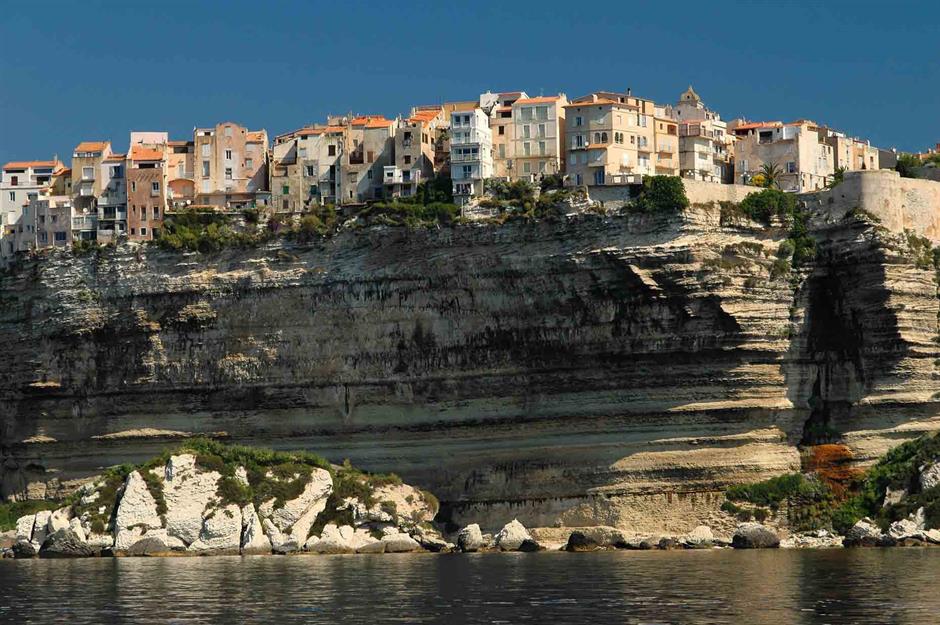
In March 2023, after three years of investigation, it was announced that the cliffs, which reach almost 350 feet (106m) high in places, have two faults, some 262 feet (80m) up. So far, two homes have been evacuated and 25 more have been classified as fragile.
In November 2023, the French Geological Survey found 35% of Corsica's rocky coastline to be highly sensitive to coastal erosion, mainly around Bonifacio, Cap-Corse and Calvi. One day, the beautiful city of Bonifacio may well be swept out to sea.
Brodten, Schleswig-Holstein, Germany
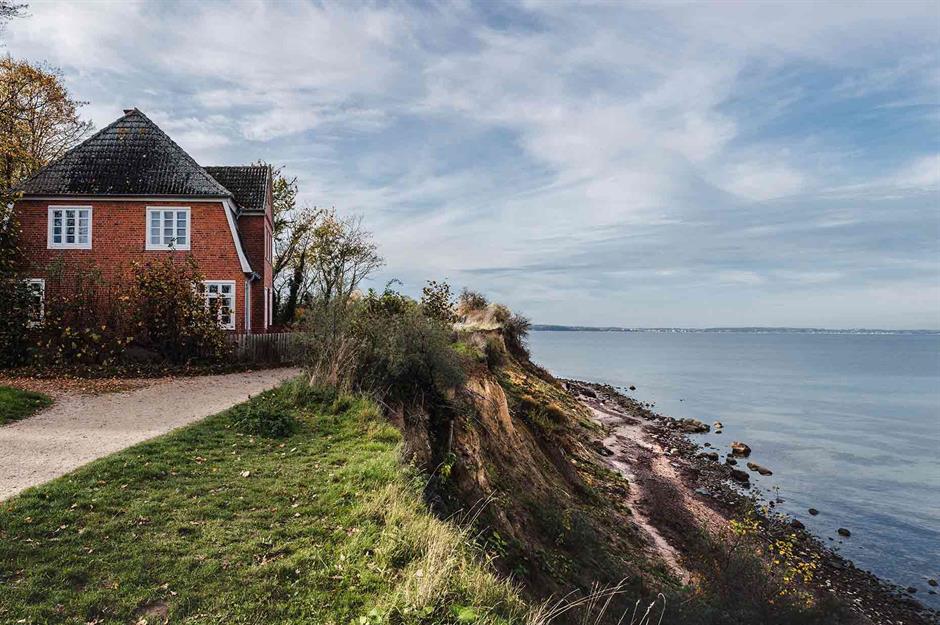
Perched on the northeast coast of Germany, in the state of Schleswig-Holstein, Brodten is extremely picturesque, dotted with rolling fields and holiday homes. Every year, visitors are drawn to the area for its stunning coastline, but sadly, the cliffs that decorate the area are under threat.
Due to its location on the Baltic Sea, the wind and waves are gradually eroding the rock face away, endangering both homes and businesses. In fact, according to the tourism website Travemuende, approximately 3.2 feet (1m) of the Brodten cliff is lost every year.
In January 2024, large chunks of a cliff tumbled into the sea during a prolonged period of rain and frost. The collapse has threatened the habitat of native sand martins, as well as the future of the buildings positioned close to the edge.
Brodten, Schleswig-Holstein, Germany
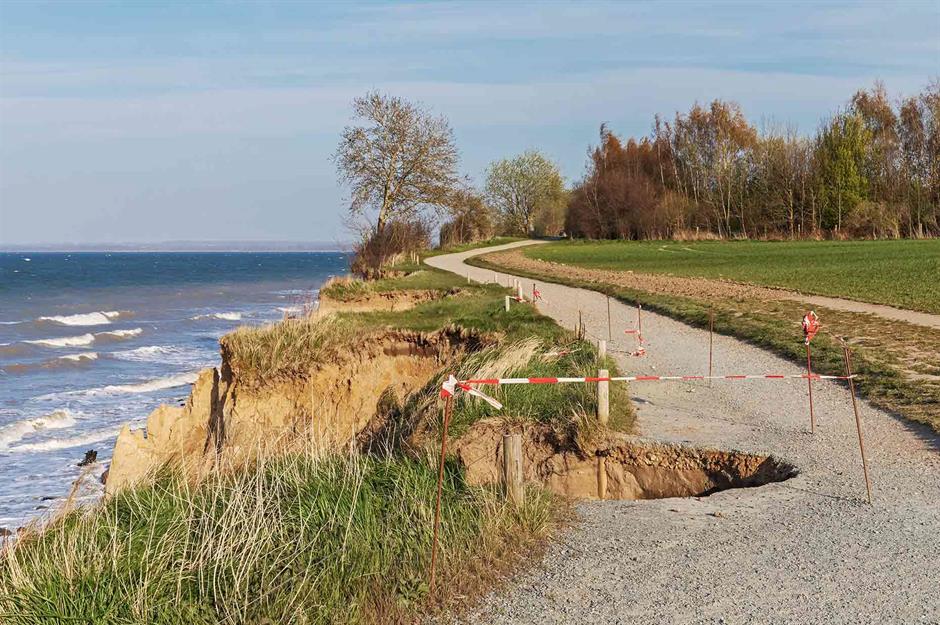
Local youth centre Haus Seeblick balances on the edge of the receding cliff. According to German broadcaster NDR, there were once 656 feet (200m) of land between the building and the sea, back in 1878. Today, there are just 16.4 feet (5m).
The centre has been temporarily closed due to safety concerns and the path that runs outside has been fenced off. While there are hopes to continue running the youth centre, it doesn't look likely. Many hiking trails along the clifftop have been closed and a ban has also been put in place restricting any new construction to at least 492 feet (150m) behind areas considered vulnerable to collapse.
Brodten, Schleswig-Holstein, Germany

And it isn't just Brodten that's in danger. Cliffs all along the northern coastline of Germany are experiencing high levels of erosion. This cliff between Wustrow and Ahrenshoop, in Mecklenburg-Vorpommern, is slowly being eaten away at, crumbling into the sea.
Large sections of the Baltic coast are retreating at an average rate of approximately 1.3 feet (40cm) per year and around 70% of the coastline in the state of Mecklenburg-Vorpommern is permanently under retreat, according to the ClimateChangePost. The cliffs here are thought to be diminishing by 0.98 feet (30cm) a year.
Hemsby, Norfolk, UK
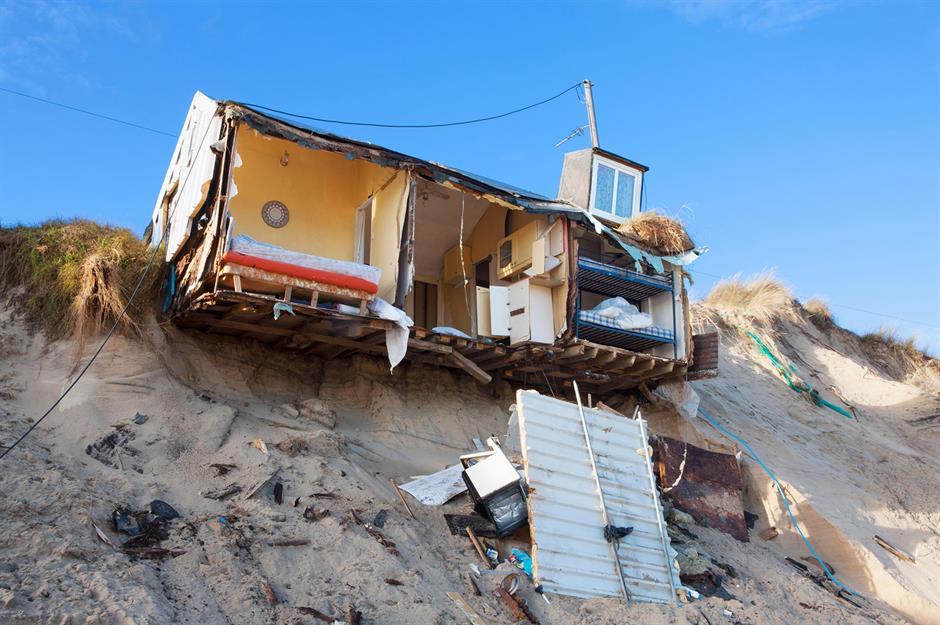
Hemsby lies on England's Norfolk coast and is gradually being eroded by the sea. The village was first devastated by a storm surge in December 2013, which destroyed seven homes. Now, the speed at which the cliff is receding has shocked locals and experts alike, with residents paying a hefty price for the lack of necessary sea defences.
When the so-called 'Beast from the East' storm hit in March 2018, the village was one of the worst affected spots in England. During the freak weather event, a total of 13 clifftop homes were left uninhabitable. Fast-forward five years and ferocious storms in March and December 2023 led to eight more properties being demolished.
Hemsby, Norfolk, UK

Unfortunately for Hemsby, and other villages like it along the Norfolk coast, help hasn't been forthcoming. In October 2023, Hemsby was found ineligible for government funding to build a 0.8-mile (1.3km) coastal defence scheme, which would cost around £20 million ($25m) to build.
This is despite tourism to the village contributing £80 million ($99m) to Norfolk's economy every year, according to the Save Hemsby Coastline (SHC) campaign group. In January 2024, the SHC handed the British government a petition calling for action. It was signed by 17,000 people.
Hemsby, Norfolk, UK
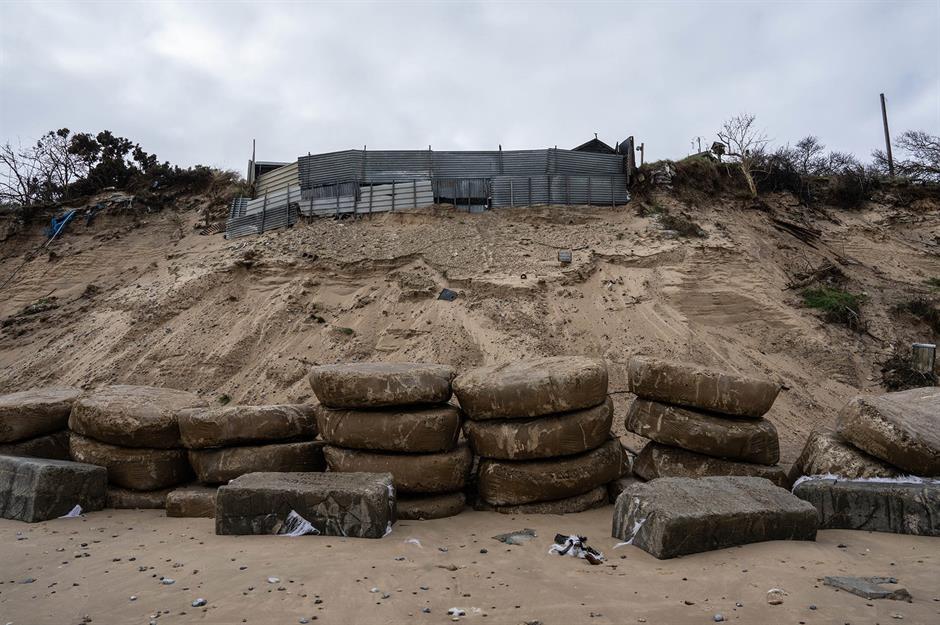
A month later, in February 2024, it was revealed that Hemsby had been left out of a £25 million ($31m) government sea defence scheme, leaving residents to resort to rudimentary defences (pictured).
Most recently, former Hemsby resident, Kevin Jordan, took the government to court for allegedly failing to protect him against climate change. Jordan lost his home due to erosion and sought compensation but, sadly, a High Court judge dismissed his claim in October 2024, stating there was no "error of law", reported the BBC.
While a new scheme that could offer locals inland plots where they could rebuild their lost homes is reportedly being proposed, it no doubt feels like too little too late for locals.
Zambujeira do Mar, Alentejo, Portugal
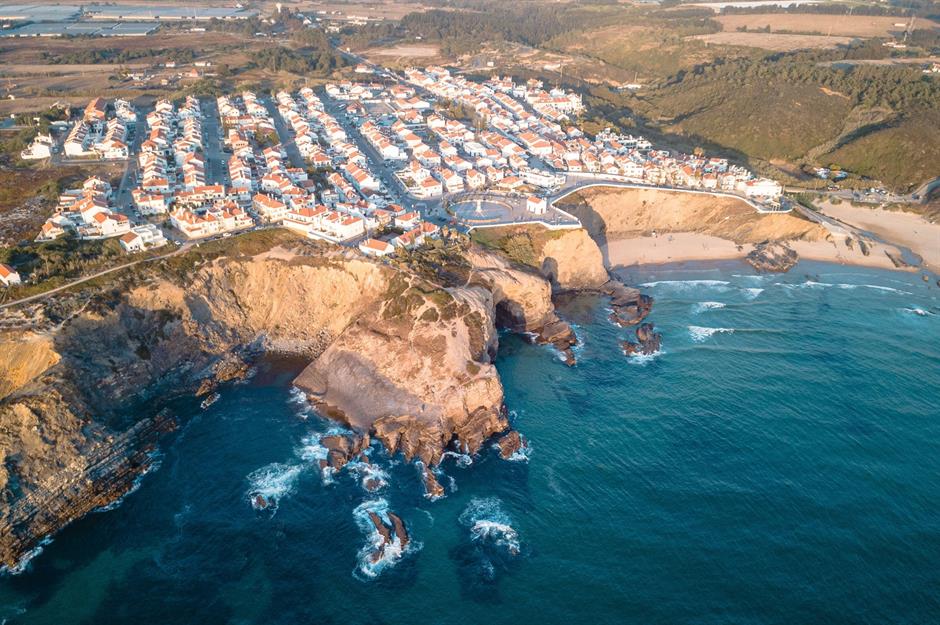
Undeniably stunning, Zambujeira do Mar sits on the top of a soaring cliff in the Alentejo region of Portugal. A popular spot for surfers, the town is celebrated for its left-breaking waves, off the cliffs at the southern end of the beach.
While these waves attract thousands of visitors a year, they are also partly responsible for the downfall of this idyllic coastal enclave.
Zambujeira do Mar, Alentejo, Portugal

The town's exposed location means sea winds, powerful waves and heavy rain regularly break away chunks of the cliff, leading to substantial erosion.
Now, the homes, roads and restaurants that make up the town are in danger of tumbling into the water below, as year-on-year, the rockface diminishes.
Zambujeira do Mar, Alentejo, Portugal
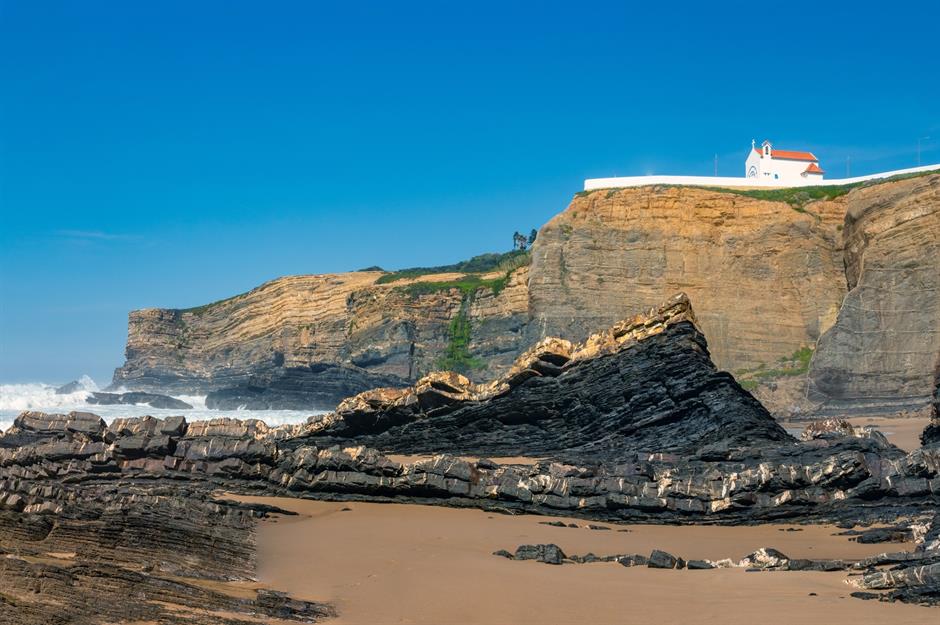
In 2016, an application was approved for cliff stabilisation on Zambujeira do Mar Beach and Porto Covo Port. Let's hope these measures go some way to protect this stunning coastal resort.
Other spots in Portugal are also suffering. Vagueira Beach (Praia da Vagueira), on the central Portuguese coast, is considered to be one of the most affected spots in Europe for coastal erosion. The area saw its coastline retreat by 512 feet (156m), between 1958 to 2001.
Guardamar del Segura, Alicante, Spain

The Spanish province of Alicante is filled with seaside resorts, gorgeous beaches and attractive towns. It's here that Guardamar del Segura can be found.
The resort town boasts a 6.8-mile-long (11km) white sand beach, which, according to research, is being eroded by human activities in the nearby Segura River basin, which has led to changes in wave patterns.
Guardamar del Segura, Alicante, Spain
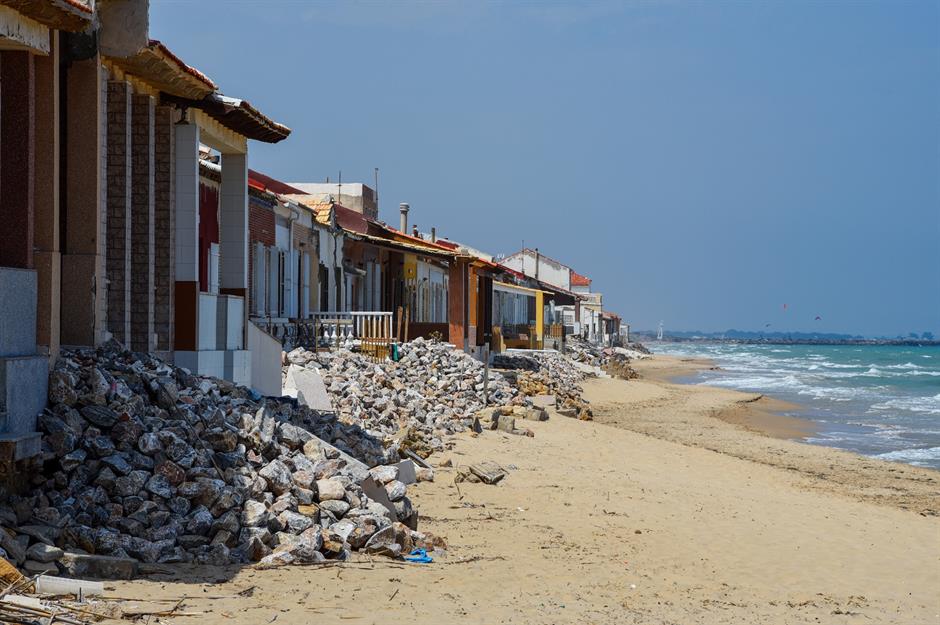
These changes in wave patterns have significantly damaged the area's sand dune system, with erosion rates reaching 2.3 feet (70cm) per year.
It's estimated that if these rates, and extreme climate events, continue at this rate, the shoreline here will retreat to the point where beachfront homes are completely destroyed by 2050. These beach huts are mere metres away from the water. And it isn't just Guardamar del Segura that's in trouble...
Guardamar del Segura, Alicante, Spain
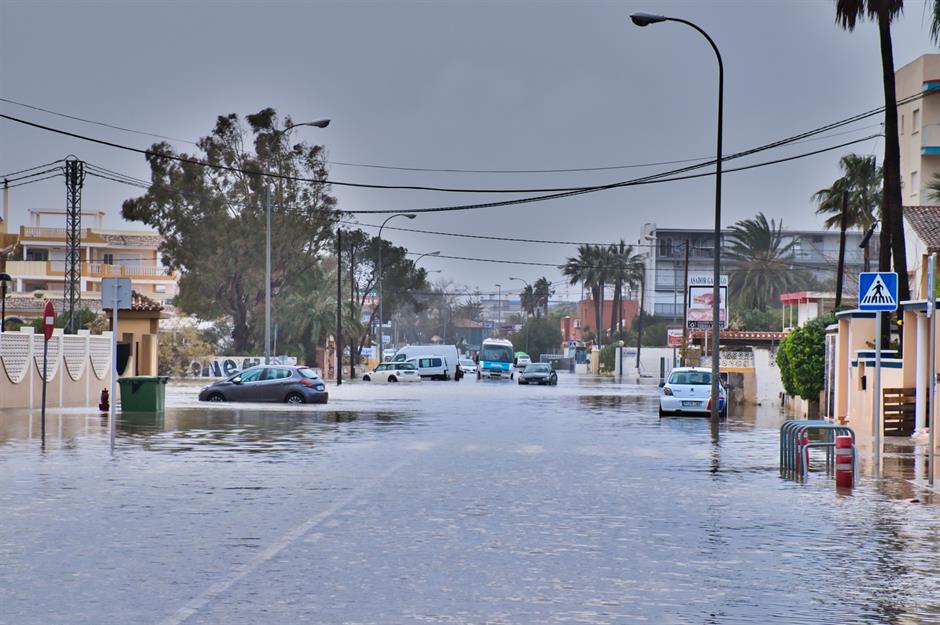
The port city of Dénia in Alicante was battered by powerful winds, sand and sea water in January 2020, when Storm Gloria swept through the region. Homes and businesses were flooded and the storm left devastating damage in its wake. This is even though the City Council of Dénia built dams from Posidonia (a marine plant) and algae on different beaches in the municipality, in a bid to combat erosion and prevent storms from swallowing the sand.
Then, in November 2023, more than 3,000 people were evicted from their homes, as the Spanish government seized properties along the coast. It’s believed the land will be used as a buffer zone for the sea.
Arraijanal-San Julián in the Costa del Sol region of Spain is also suffering. Between 2016 and 2022, the coastline between Torremolinos and Málaga retreated by approximately 148 feet (45m), Euronews reported.
Happisburgh, Norfolk, UK
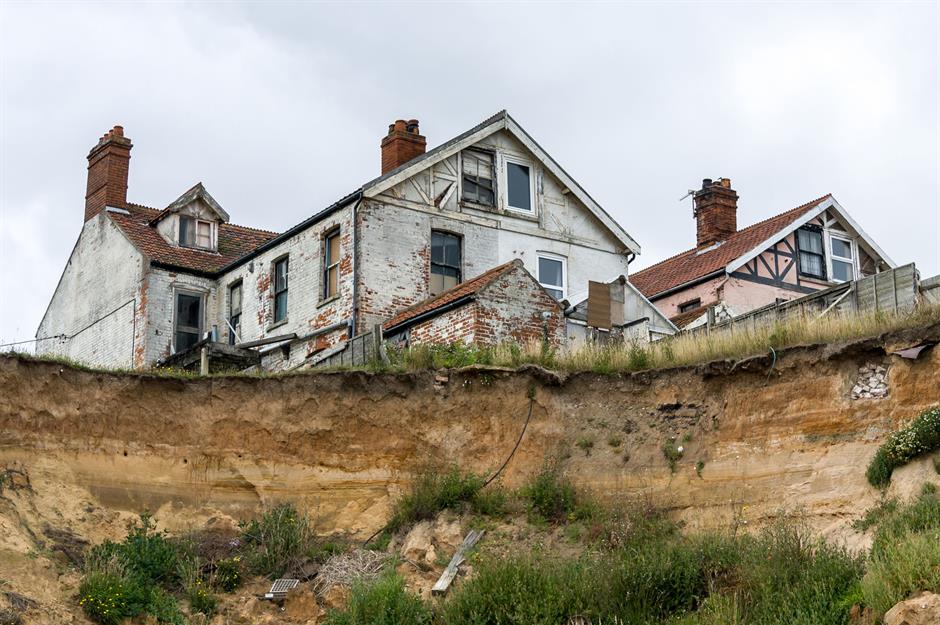
A warmer world means fiercer and more frequent storms and ever more damaging sea swells and storm surges, which doesn't bode well for places like Happisburgh on England's east coast, one of the fastest eroding shorelines in Europe.
Battling for survival against the sea, Happisburgh's soft clay and sand cliffs have been falling apart for the past 5,000 years and over the last 20 years, more than 30 homes have tumbled into the waves.
Happisburgh, Norfolk, UK

Unsurprisingly, the sea defences that were built in the 1950s have failed to protect the town. A catastrophic storm surge in 2013 left homes teetering on the edge of the Happisburgh's cliffs, while others fell dramatically into the sea.
Over the next 20 years, Happisburgh is predicted to relinquish more land to the sea than any other location in Britain. Experts estimate that the village will lose the equivalent of two football pitches' worth of land over the next two decades. With its timber defences failing to hold back the waves, the future of this locale looks pretty bleak.
Happisburgh, Norfolk, UK
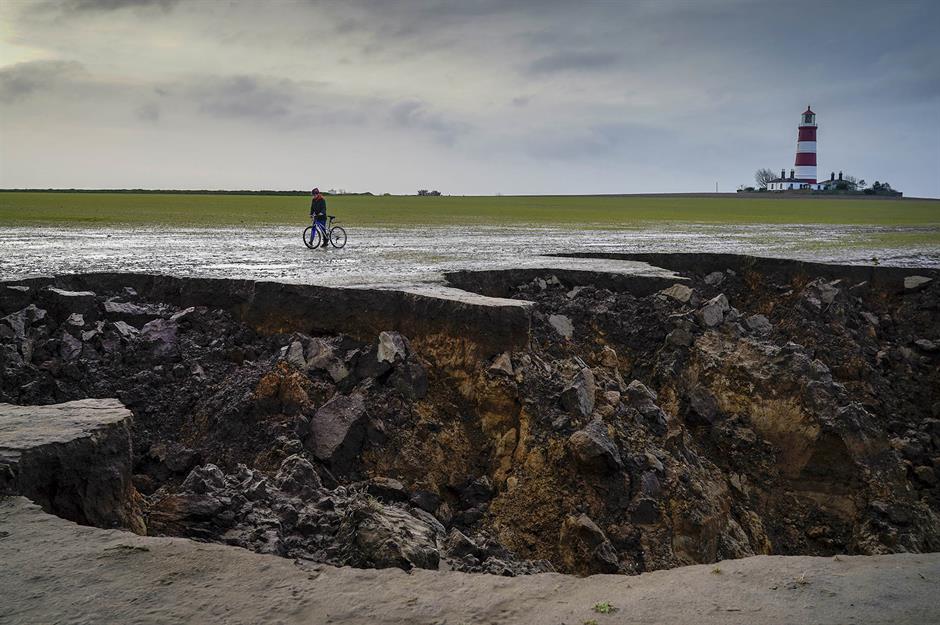
Landslips continue to threaten the historic village and the coastline shrank by around 33 feet (10m) in the winter of 2023 alone, according to local paper, the North Norfolk News.
Unfortunately, Happisburgh has been denied government funding to improve its sea defences, with the local council stating that it was "not realistically feasible". According to the BBC, North Norfolk District Council spent £3.2 million ($3.9m) purchasing the most at-risk homes for a reduced price, which has helped some residents relocate further inland. However, plenty of other locals haven't been so lucky.
Soulac-sur-Mer, Gironde, France

The picturesque town of Soulac-sur-Mer is located on the Aquitaine coast in southwest France. Every year, the shoreline in this scenic part of the world is retreating and, as climate change intensifies, the situation is sure to get even worse.
Soulac-sur-Mer, Gironde, France

In fact, the Le Signal apartment building (pictured here) has become the poster child for climate change-induced coastal erosion in France.
Built in the 1960s, the housing complex was constructed on an artificial sand dune and originally sat over 600 feet (182m) from the water.
Soulac-sur-Mer, Gironde, France
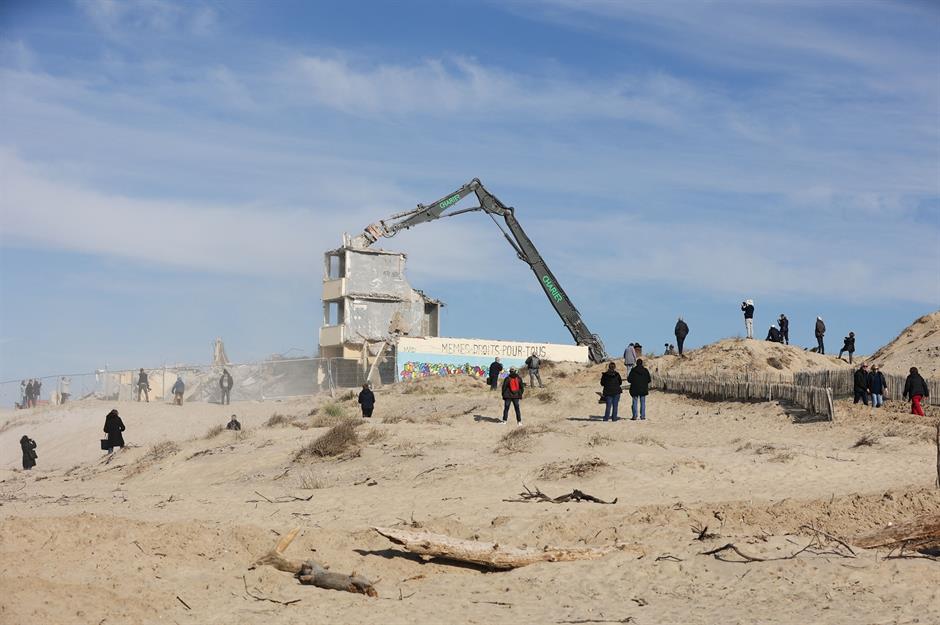
The building was evacuated in 2014 and subsequently condemned, following a succession of eight winter storms that caused rapid erosion to the coastline.
In February 2023, Le Signal was finally demolished, having lost the fight with Mother Nature. At the time of its demise, the complex stood just 40 feet (12m) from the Atlantic Ocean, highlighting the shocking impact global warming is having on our coastlines.
Skipsea, East Yorkshire, UK
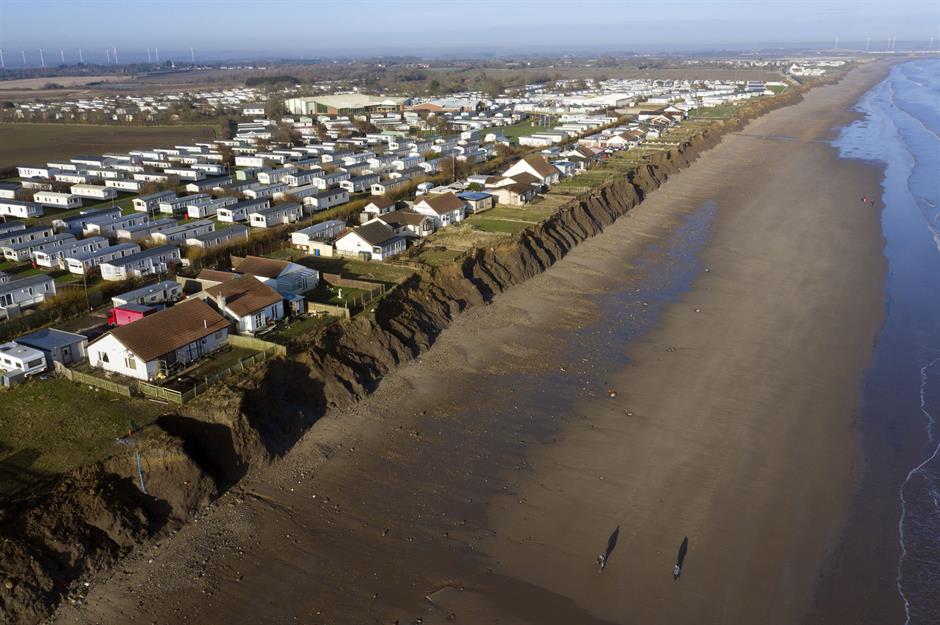
Another village on England's east coast that is enduring alarming erosion is Skipsea. The town could be erased from the map in the not-so-distant future, as the sea slowly eats away at the area's soft clay soils at a rate of almost 20 feet (6m) per year.
In fact, some parts of the town have lost as much as 49 feet (15m) in one year. Dr Eddie Dempsey, a geology professor at the University of Hull, told the British newspaper the Mirror that the erosion is nothing new, but that it is getting "faster and faster" and is "a direct consequence of climate change".
Skipsea, East Yorkshire, UK
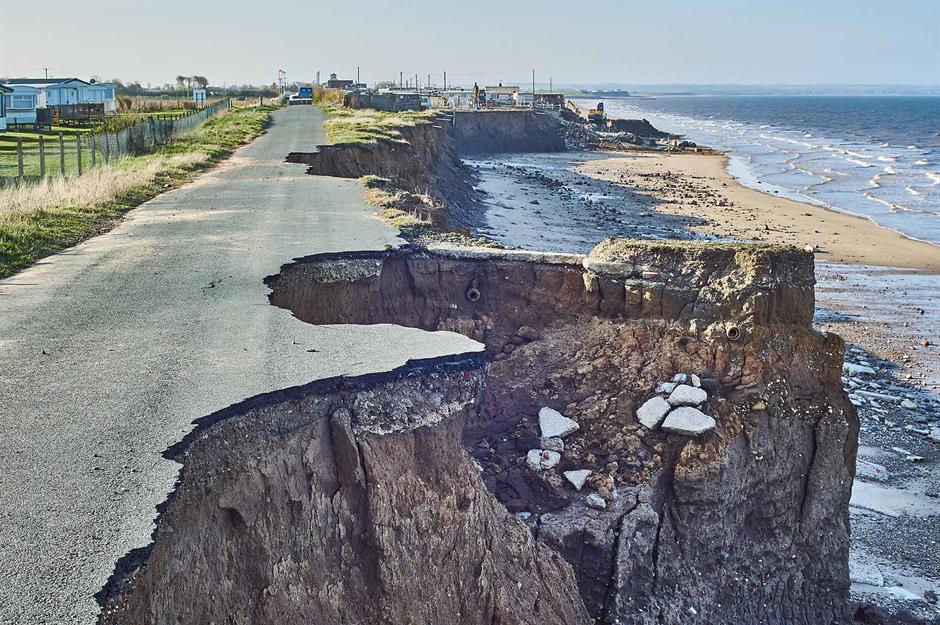
Over the past 20 years, approximately half a mile (0.8km) of land has dissolved into the sea, according to residents. Entire streets have disappeared, along with the buildings that once stood on them. And, of course, many more homes are at risk.
2023 was a terrible year for Skipsea, with high tides and strong winds contributing to several significant cliff collapses. In early 2024, further storms defeated 30 feet (76m) of coastline in the space of just two weeks.
Skipsea, East Yorkshire, UK
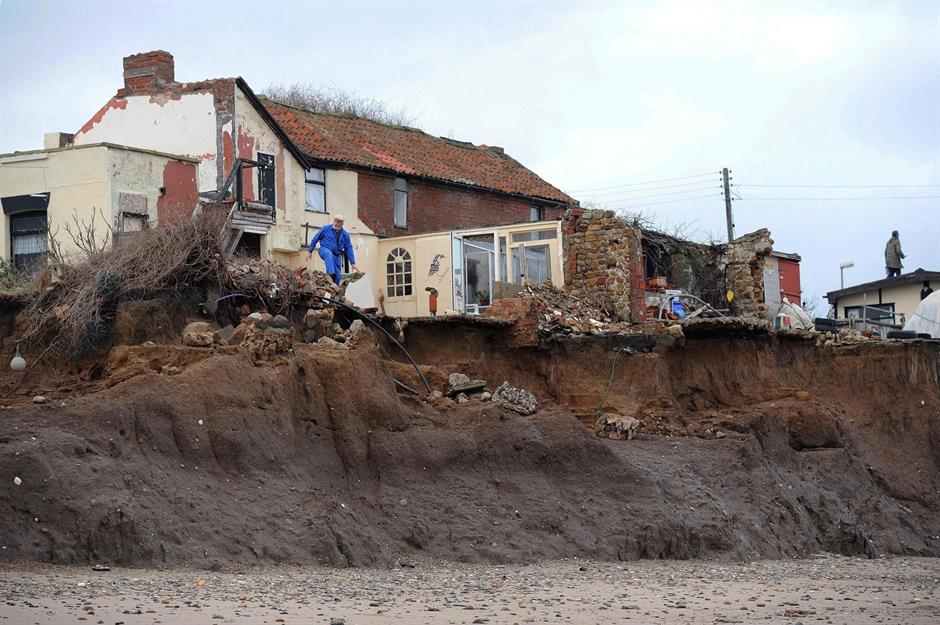
One local caravan park owner believes he has lost 10 acres (4ha) of land over the past 60 years, according to the Mirror newspaper.
Unfortunately, implementing a coastal defence system has been deemed too costly by the local authorities and could also have a negative impact on local marine ecosystems. Skipsea's days appear to be numbered and has been described as a ghost town, as residents flee to safer climes.
Venice, Veneto, Italy

Rising sea levels present an existential threat to the historic Italian city of Venice. Climate scientists predict that the tourist hotspot will be entirely underwater by the end of the 21st century.
Made up of 120 islands, connected by 391 bridges that crisscross over 177 canals, Venice is sinking. Its beautiful buildings are constructed on a lagoon made of mud and loose clay, balanced upon inadequate foundations of vertical timber poles embedded into mud. As a result, the city has sunk by 5.9 inches (15cm) over the past century.
Venice, Veneto, Italy
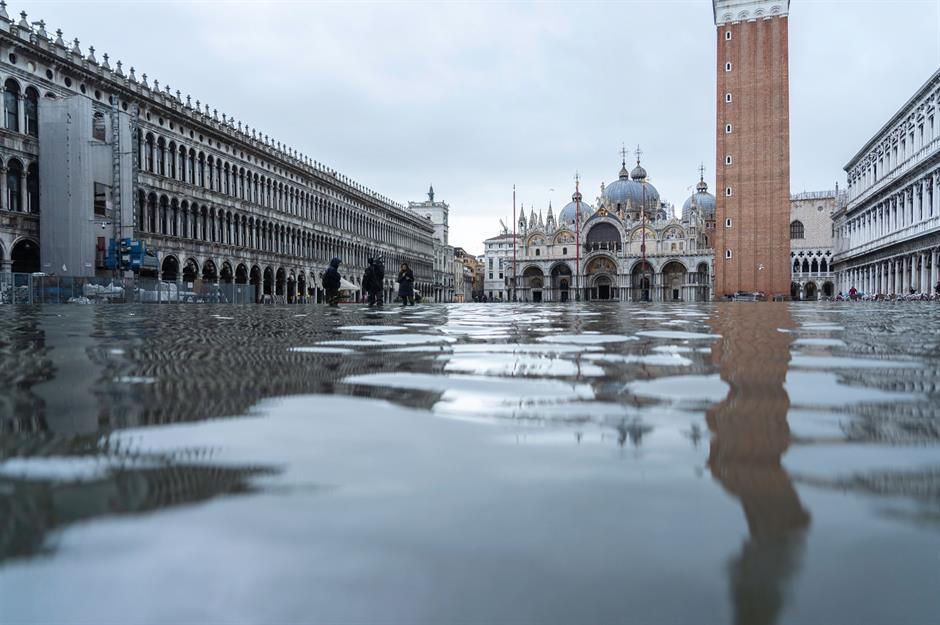
In November 2019, Venice suffered a high tide or 'acqua alta' of six feet (1.8m), the second-highest on record and the worst since 1966. The waters flooded over 80% of the city, leaving its most famous landmarks, such as Piazza San Marco (pictured), underwater.
The square's famous basilica – which stands just 26 inches (65cm) above sea level – was flooded by seawater, which damaged its ancient marble slabs, mosaics and columns. Repair works cost the government an estimated €3.3 million (£2.7m/$3.4m).
Venice, Veneto, Italy
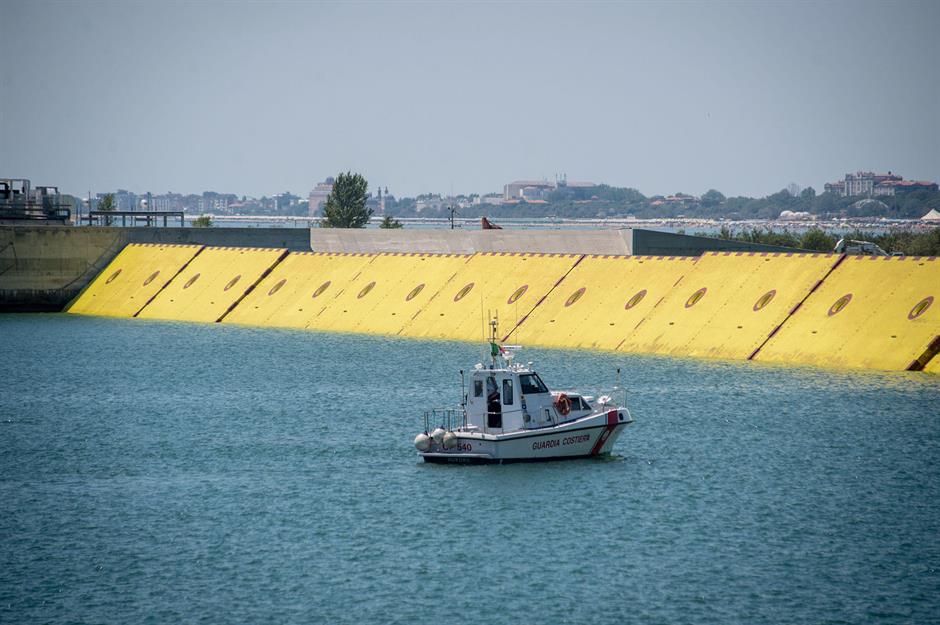
The Venetian authorities hope that an ambitious flood defence project will save the city. Building started on the MOSE megaproject in 2003 and was predicted to be finished in 2011, but due to delays and spiralling costs, it wasn't finished until 2020.
It was predicted that MOSE would be raised around five times a year, every time the incoming tide hit 3.6 feet (1m). In the first two years alone, MOSE was deployed 49 times. However, climate change experts predict Venice's sea level could rise by almost 2.5 feet (0.8m) by 2100.
Catalonia region, Spain
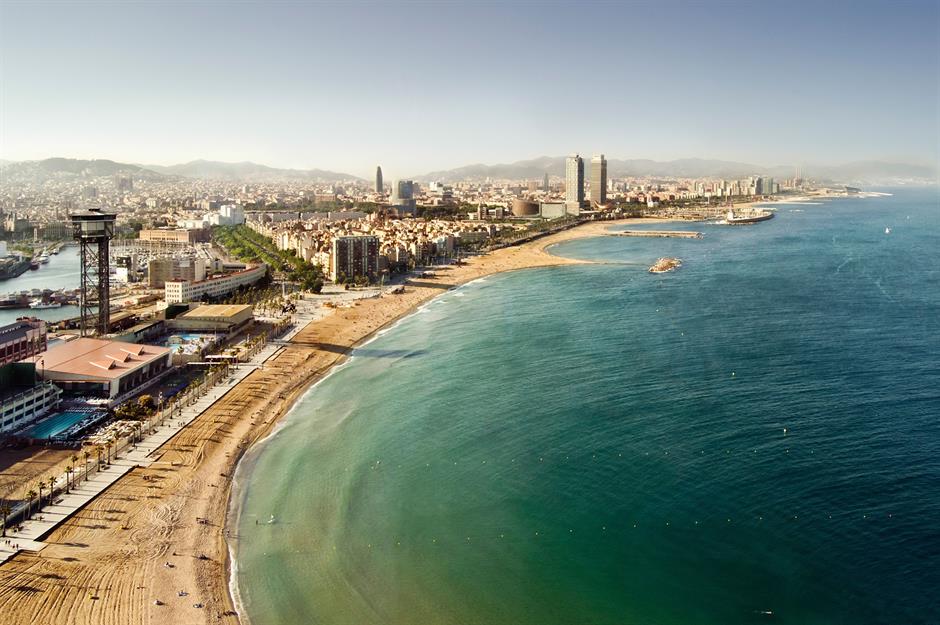
The Catalonia region of Spain is celebrated for its stunning coastline, which is dotted with lively resorts and enticing urban beaches.
While the region is undeniably beautiful and diverse, it is also suffering from the effects of global warming. According to international news site Euronews, Spain’s chaotic climate, including "blazing heat, prolonged drought and heavy downpours", has resulted in the decline of tourists, as well as some of the area's most popular beaches.
Catalonia region, Spain
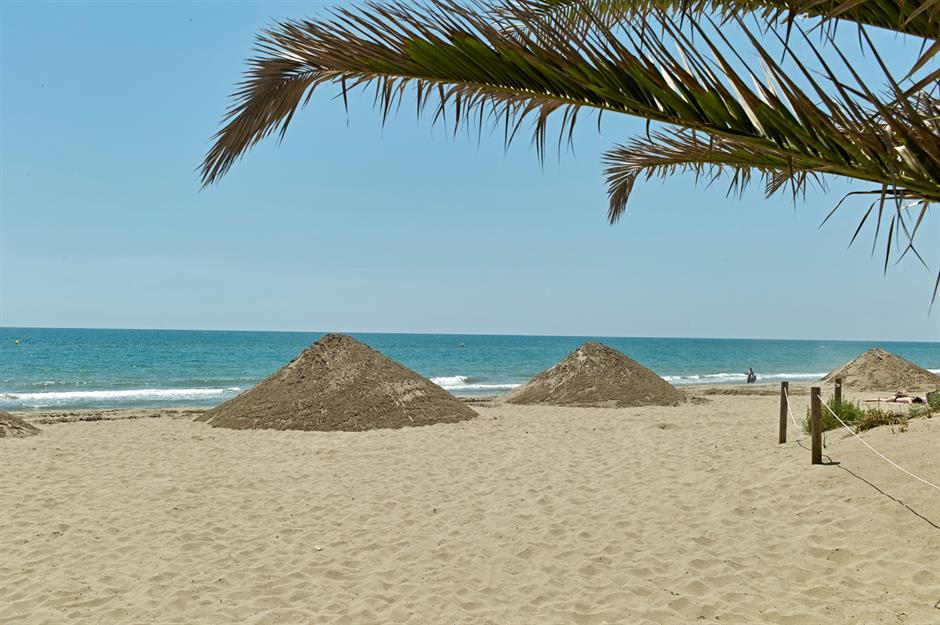
According to the Climate Variability and Change Group, many beaches in Spain are being eroded, particularly during periods of strong waves caused by winter storms. In fact, in March 2024, intense wind and rain saw some Barcelona beaches lose up to 82 feet (25m) of sand from their width.
Sand dunes have also been disappearing from beaches across the Catalonia region, “drastically reducing biodiversity and diminishing natural protections against waves and storm surges”. The beaches of Barcelona are particularly affected, so local authorities have taken to creating so-called 'hybrid dunes' – sand mixed with marram grass on the city’s urban beaches, to conserve the sand and protect the city from flooding.
Catalonia region, Spain
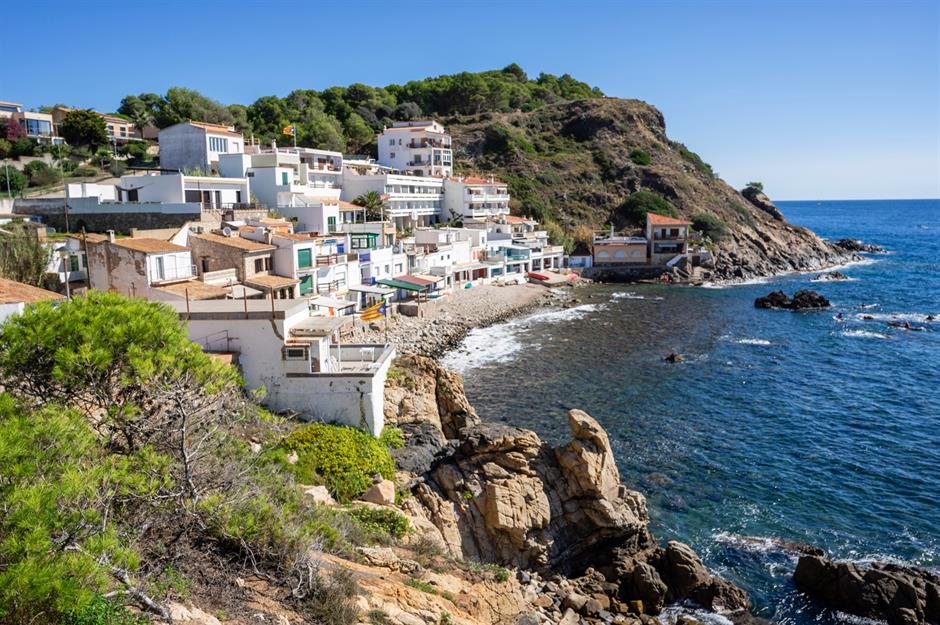
In 2010, the Spanish government sent 24.7 million cubic feet (700,000m3) of sand to the coast of Barcelona, but since then 70% of that sand has disappeared. Barcelona’s nine city beaches have been losing approximately 1.1 million cubic feet (30,000m3) of sand a year, while overall, Catalonia’s beaches have lost 25% of their sand since 2015.
So far, the Spanish government has spent an estimated €5.3 million (£4.4m/$5.5m) in an attempt to protect Catalonia’s coastline. With local authorities struggling to keep up with the extent of the erosion, there is real fear over the future of the region's beaches, which attract millions of tourists each year. Without these beaches, what does the future of Spain's tourism industry look like?
Biscarrosse, Landes, France

According to news site France 24, a quarter of France’s coastline is currently affected by erosion. Due to increasingly violent storms, caused by global warming, some beaches are diminishing by 8.2 feet (2.5m) every year, leading to entire towns on the verge of being enveloped by the sea.
One town in particular is seeing dramatic change – Biscarrosse, in the Landes department of the country.
Biscarrosse, Landes, France
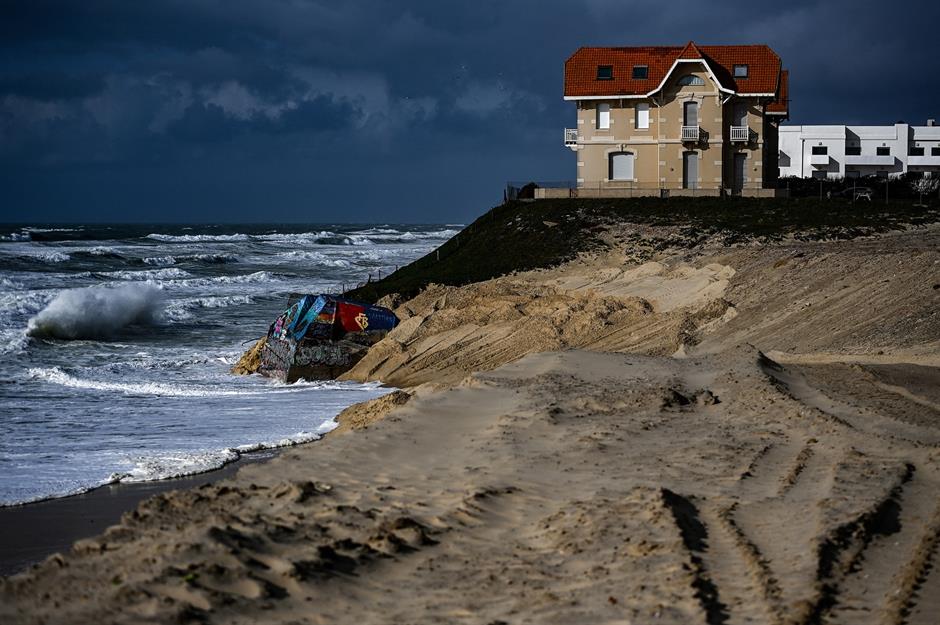
Biscarrosse lies on France's southwestern coast, on the Atlantic Ocean. In March 2024, the beaches here were closed to the public due to erosion leaving some of the buildings along the cliffs in a very precarious position. It’s suggested that the extreme levels of erosion, the likes of which haven’t been seen since 2014, are the consequence of severe weather conditions and powerful currents.
Every year, local authorities close the beaches here to replenish the lost sand. Annually, authorities transport 2.5 cubic feet (70,000m3) of sand per year, with the highest number of sand being deposited in 2020 when more than 3.5 million cubic feet (100,000 m3) was needed, reported France 24.
Biscarrosse, Landes, France

In 2019, André Laforêt bought his dreamy property, which was built on the sand dune of Biscarrosse. However, shortly after moving in, his neighbours were evicted and he realised he would soon be forced to leave, too, as the Atlantic Ocean edged closer to his front door. Unable to live in his new home, or sell it to anyone else, Laforêt sought compensation.
French law has the "Barnier Fund" to compensate victims of natural disasters, but sadly coastal erosion isn't included, leaving Laforêt, and many other residents, with nothing.
Loved this? Discover more ill-fated and abandoned homes around the world.
Comments
Be the first to comment
Do you want to comment on this article? You need to be signed in for this feature